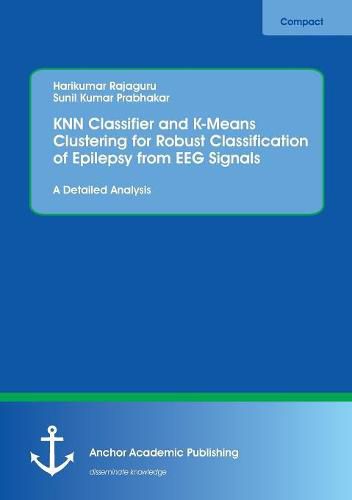Readings Newsletter
Become a Readings Member to make your shopping experience even easier.
Sign in or sign up for free!
You’re not far away from qualifying for FREE standard shipping within Australia
You’ve qualified for FREE standard shipping within Australia
The cart is loading…






This title is printed to order. This book may have been self-published. If so, we cannot guarantee the quality of the content. In the main most books will have gone through the editing process however some may not. We therefore suggest that you be aware of this before ordering this book. If in doubt check either the author or publisher’s details as we are unable to accept any returns unless they are faulty. Please contact us if you have any questions.
Epilepsy is a chronic disorder, the hallmark of which is recurrent, unprovoked seizures. Many people with epilepsy have more than one type of seizures and may have other symptoms of neurological problems as well. Epilepsy is caused due to sudden recurrent firing of the neurons in the brain. The symptoms are convulsions, dizziness and confusion. One out of every hundred persons experiences a seizure at some time in their lives. It may be confused with other events like strokes or migraines. Unfortunately, the occurrence of an epileptic seizure seems unpredictable and its process still is hardly understood. In India, the number of persons suffering from epilepsy is increasing every year. The complexity involved in the diagnosis and therapy has to be cost effective. In this project, the authors applied an algorithm which is used for a classification of the risk level of epilepsy in epileptic patients from Electroencephalogram (EEG) signals. Dimensionality reduction is done on the EEG dataset by applying Power Spectral density. The KNN Classifier and K-Means clustering is implemented on these spectral values to epilepsy risk level detection. The Performance Index (PI) and Quality Value (QV) are calculated for the above methods. A group of twenty patients with known epilepsy findings are used in this study.
$9.00 standard shipping within Australia
FREE standard shipping within Australia for orders over $100.00
Express & International shipping calculated at checkout
This title is printed to order. This book may have been self-published. If so, we cannot guarantee the quality of the content. In the main most books will have gone through the editing process however some may not. We therefore suggest that you be aware of this before ordering this book. If in doubt check either the author or publisher’s details as we are unable to accept any returns unless they are faulty. Please contact us if you have any questions.
Epilepsy is a chronic disorder, the hallmark of which is recurrent, unprovoked seizures. Many people with epilepsy have more than one type of seizures and may have other symptoms of neurological problems as well. Epilepsy is caused due to sudden recurrent firing of the neurons in the brain. The symptoms are convulsions, dizziness and confusion. One out of every hundred persons experiences a seizure at some time in their lives. It may be confused with other events like strokes or migraines. Unfortunately, the occurrence of an epileptic seizure seems unpredictable and its process still is hardly understood. In India, the number of persons suffering from epilepsy is increasing every year. The complexity involved in the diagnosis and therapy has to be cost effective. In this project, the authors applied an algorithm which is used for a classification of the risk level of epilepsy in epileptic patients from Electroencephalogram (EEG) signals. Dimensionality reduction is done on the EEG dataset by applying Power Spectral density. The KNN Classifier and K-Means clustering is implemented on these spectral values to epilepsy risk level detection. The Performance Index (PI) and Quality Value (QV) are calculated for the above methods. A group of twenty patients with known epilepsy findings are used in this study.